On this day on 15th October
On this day in 1836 James Tissot was born in Nantes. Despite the fame achieved by painting wealthy patrons, Tissot was also interested in everyday life. Along with Gustave Courbet, Honoré Daumier and Jean-François Millet became involved in portraying people in modern dress. Art critics criticised what they considered to be "politically charged work". In 1868 Tissot painted a series of modern Parisian women going about their daily lives in the city and suburbs.
In 1869 Tissot was commissioned by Thomas Gibson Bowles to make caricatures for his new satirical magazine, Vanity Fair. The first of these depicted Emperor Napoleon III. Tissot was a member of the national guard during the Franco-Prussian War and defended the Paris Commune in 1871. During bombardment in April and May, Tissot worked as a stretcher-bearer. He was appalled to see the brutality of the French troops when they suppressed the revolt in May. This included making sketches of what he witnessed, including a mass execution of 200 communards
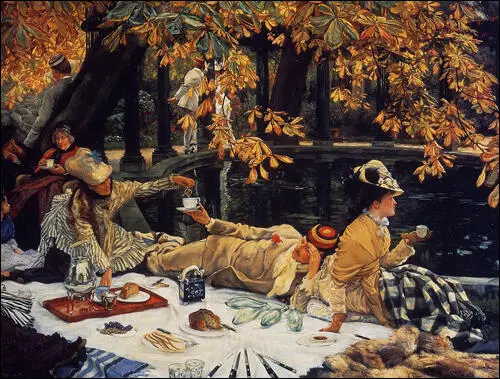
On this day in 1842 Karl Marx becomes editor-in-chief of The Rhenish Gazette. At socialist meetings Marx discovered that he was not a great orator. He had a slight lisp and his gruff Rhenish accent was difficult to understand. He therefore decided to try journalism. It has been pointed out by Eric Hobsbawm that the newspaper was funded by "a group of wealthy Cologne men in business and the professions and representing the moderate but loyal liberalism of the (non-clerical) Rhineland bourgeoisie".
After six months and a number of articles, he became the newspaper's editorial director. He developed an aggressive style of writing and clearly "delighted in his talent for inflicting verbal violence". Karl Heinzen claimed he would use "logic, dialectics, learning... to annihilate anyone who would not see eye to eye with him. Marx, he said, wanted "to break windowpanes with cannon". According to the socialist politician, Wilhelm Liebknecht, Marx had the "style is the dagger used for a well-aimed thrust at the heart".
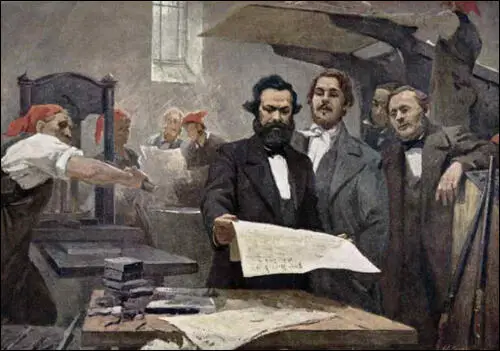
On this day in 1866 Marie Brackenbury, the daughter of Hilda Brackenbury, and the sister of Georgina Brackenbury, was born on 15th October 1866. Her father, Charles Brackenbury, was an army general and two of her brothers died while serving in the armed forces.
Brackenbury studied at the Slade Art School and became a talented landscape painter. A member of the National Union of Women's Suffrage Societies (NUWSS) she joined the Women's Social and Political Union (WSPU) in March 1907. Marie later recalled that she had been impressed with the "womanliness" of Emmeline Pankhurst.
In February 1908, Marie Brackenbury and her sister Georgina Brackenbury were arrested in February 1908 during a WSPU demonstration outside the House of Commons and was sentenced to six weeks in Holloway Prison. Later that year she contributed a cartoon to the Woman's Franchise journal.
Marie visited Eagle House near Batheaston on 22nd July 1910 with her sister Georgina Brackenbury. Their host, was Mary Blathwayt, a fellow member of the WSPU. Her father Colonel Linley Blathwayt planted a tree, a Cupressus Lawsoniana Filifera, in her honour in his suffragette arboretum in a field adjacent to the house.
Christabel Pankhurst decided that the WSPU needed to intensify its window-breaking campaign. On 1st March, 1912, a group of suffragettes volunteered to take action in the West End of London. The Daily Graphic reported the following day: "The West End of London last night was the scene of an unexampled outrage on the part of militant suffragists.... Bands of women paraded Regent Street, Piccadilly, the Strand, Oxford Street and Bond Street, smashing windows with stones and hammers."
Marie Brackenbury and her mother, were both arrested for taking part in the demonstration. Hilda Brackenbury, aged 79, was accused of breaking two windows in the United Service Institution in Whitehall. She served eight days on remand before being sentenced to 14 days in Holloway Prison. In court Marie claimed that she was "a soldier in this great cause". She was sentenced to two weeks in prison.
Mrs Brackenbury's home at 2 Campden Hill Square, London, became known as "Mouse Castle" as members of the WSPU went there to recuperate after being released under the Cat & Mouse Act.
Marie Brackenbury died in 1950. The last survivor of the immediate family, she left the house to the Over Thirties Association. The Suffragette Fellowship commissioned a plaque to be attached to the house. It read "The Brackenbury trio were so whole-hearted and helpful during all the early strenuously years of the militant suffrage movement. We remember them with honour."

On this day in 1883 US Supreme Court declares Civil Rights Act of 1875 unconstitutional. The Civil Rights Act (1875) was introduced to Congress by Charles Sumner and Benjamin Butler in 1870 but did not become law until 1st March, 1875. It promised that all persons, regardless of race, color, or previous condition, was entitled to full and equal employment of accommodation in "inns, public conveyances on land or water, theaters, and other places of public amusement." In 1883 the Supreme Court declared the act as unconstitutional and asserted that Congress did not have the power to regulate the conduct and transactions of individuals.
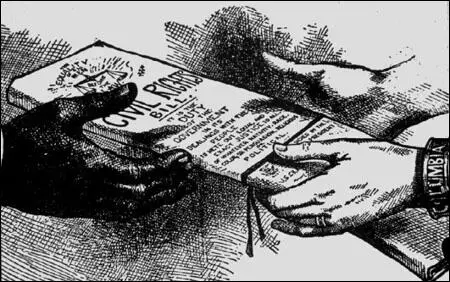
On this day in 1905 Christabel Pankhurst and Annie Kenney become the first people campaigning for women's suffrage to be sent to prison. On 13 October 1905, Kenney and Pankhurst attended a meeting in London to hear Sir Edward Grey, a minister in the British government. When Grey was talking, the two women constantly shouted out, "Will the Liberal Government give votes to women?" When the women refused to stop shouting, the police were called to evict them from the meeting. Pankhurst and Kenney refused to leave and during the struggle, a policeman claimed the two women kicked and spat at him. Pankhurst and Kenney were arrested and charged with assault.
Annie Kenney and Christabel Pankhurst were found guilty of assault and fined five shillings each. When the women refused to pay the fine they were sent to prison. The case shocked the nation. For the first time in Britain women had used violence in an attempt to win the vote. In her autobiography, Memories of a Militant (1924) she described what it was like to be in prison with Christabel: "Being my first visit to jail, the newness of the life numbed me. I do remember the plank bed, the skilly, the prison clothes. I also remember going to church and sitting next to Christabel, who looked very coy and pretty in her prison cap ... I scarcely ate anything all the time I was in prison, and Christabel told me later that she was glad when she saw the back of me, it worried her to see me looking pale and vacant.
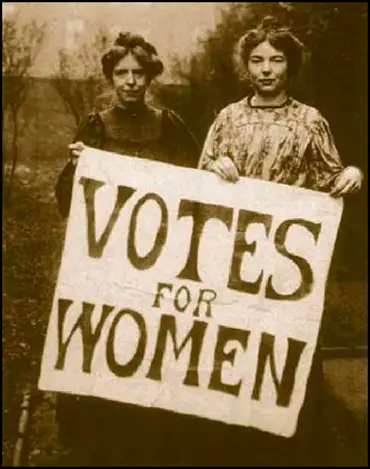
On this day in 1917 exotic dancer Mata Hari is executed by firing squad for spying for Germany during First World War.
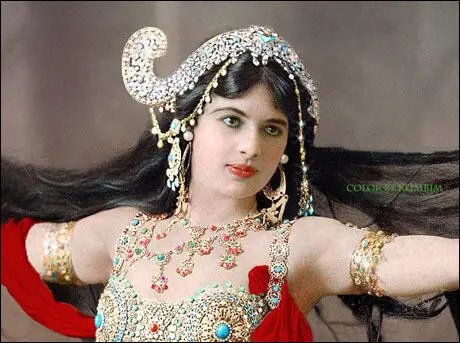
15 October 1915 the Women's Social and Political Union changed its newspaper's name from The Suffragette to Britannia. On 4th August, 1914, England declared war on Germany. The leadership of the WSPU began negotiating with the British government. On the 10th August the government announced it was releasing all suffragettes from prison. In return, the WSPU agreed to end their militant activities and help the war effort.
Emmeline Pankhurst's patriotic view of the war was reflected in the paper's new slogan: "For King, For Country, for Freedom'. In the newspaper anti-war activists such as Ramsay MacDonald were attacked as being "more German than the Germans". Another article on the Union of Democratic Control carried the headline: "Norman Angell: Is He Working for Germany?" Mary Macarthur and Margaret Bondfield were described as "Bolshevik women trade union leaders" and Arthur Henderson, who was in favour of a negotiated peace with Germany, was accused of being in the pay of the Central Powers.
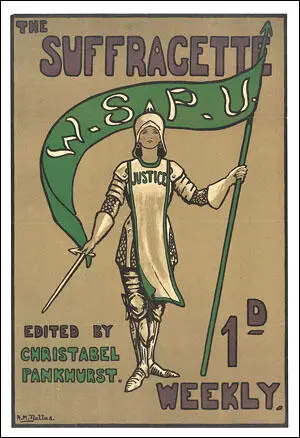
On this day in 1941 Hideki Tojo appointed Prime Minister of Imperial Japan. Tojo held extreme right-wing views and was a supporter of Nazi Germany. He also feared the long-term plans of Joseph Stalin and in 1938 he advocated pre-emptive air strikes on both China and the Soviet Union. In October 1941 he initially backed the foreign office's efforts to reach agreement with the United States. However, when convinced that a negotiated deal was possible, ordered the attack on Pearl Harbor on 7th December, 1941. As well as prime minister Tojo also held the posts of minister of war, home minister and foreign minister. From February 1944 he was also Commander in Chief of the General Staff. Tojo, aware that Japan was unable to win the war, resigned from office after the loss of Saipan in July 1944. He shot himself in the chest just before he was arrested by the US Military in 1945. Tojo survived and after being nursed back to health was tried as a war criminal. Hideki Tojo was executed on 23rd December 1948.
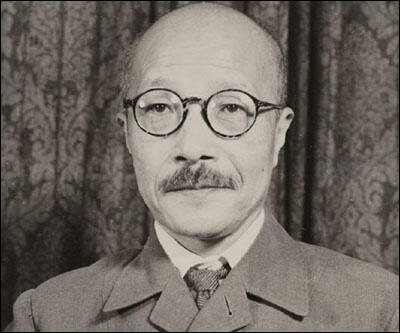
On this day in 1946 Herman Göring committed suicide. Göring, one of the most senior figures in the Nazi German government, was found guilty at Nuremberg War Crimes Trial but avoided execution by swallowing potassium cyanide.
On this day in 1962 photographs were taken that revealed that the Soviet Union was placing long range missiles in Cuba. At the beginning of September 1962, U-2 spy planes discovered that the Soviet Union was building surface-to-air missile (SAM) launch sites. There was also an increase in the number of Soviet ships arriving in Cuba which the United States government feared were carrying new supplies of weapons. President John F. Kennedy complained to the Soviet Union about these developments and warned them that the United States would not accept offensive weapons (SAMs were considered to be defensive) in Cuba.
As the Cubans now had SAM installations they were in a position to shoot down U-2 spy-planes. Kennedy was in a difficult situation. Elections were to take place for the United States Congress in two month's time. The public opinion polls showed that his own ratings had fallen to their lowest point since he became president. One poll showed that over 62 per cent of the population were unhappy with his policies on Cuba. Understandably, the Republicans attempted to make Cuba the main issue in the campaign.

